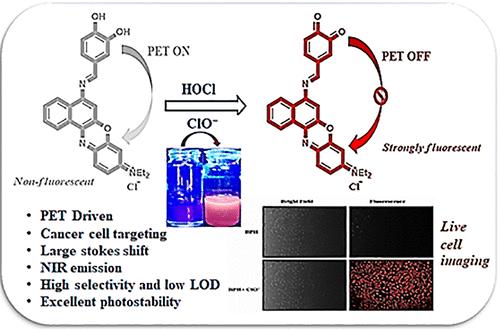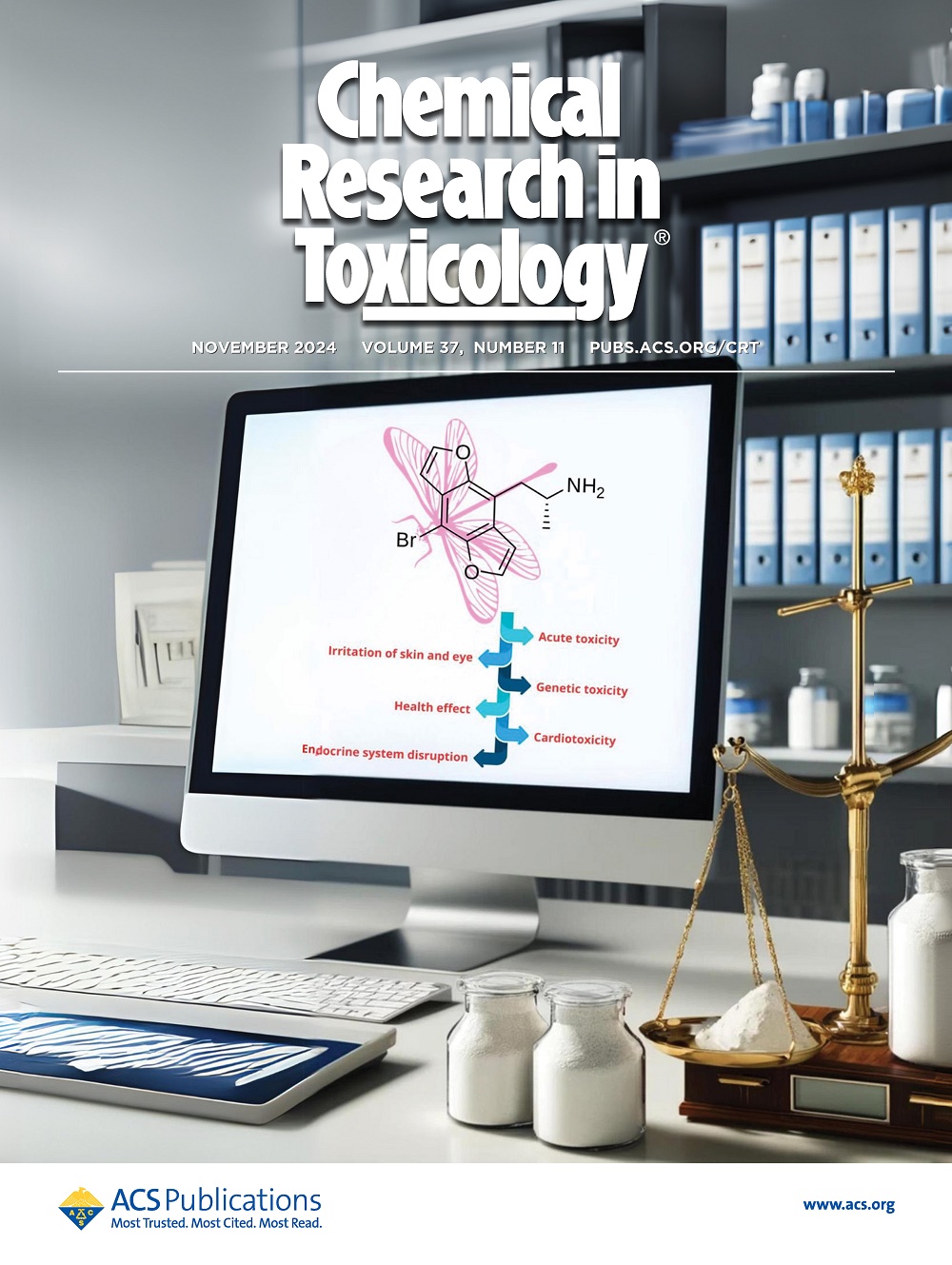用于选择性检测水介质中次氯酸盐和活细胞成像的近红外荧光开启探针
IF 3.7
3区 医学
Q2 CHEMISTRY, MEDICINAL
引用次数: 0
摘要
次氯酸盐作为一种重要的活性氧(ROS),在许多生理和病理过程中发挥着重要作用,但过高浓度的次氯酸盐(ClO-)可能会对人体产生毒性并导致疾病。因此,为了人类的安全,有必要对次氯酸盐(ClO-)进行选择性的快速检测。在此,我们报告了一种新型的近红外(NIR)荧光 "开启 "和高选择性苯并吩噁嗪基氯化荧光探针 BPH(苯并吩噁嗪二羟基苯甲醛),用于次氯酸盐检测。由于次氯酸盐诱导邻位二元醇氧化成相应的邻位苯醌衍生物,从邻位二元醇到氯化苯并吩噁嗪受体分子的光诱导电子传递(PET)过程突然受到抑制,结果观察到强烈的近红外荧光 "开启 "发射。结果发现,BPH 的检测限为 2.39 × 10-10 M 或 0.23 nM。BPH 成功地应用于活体 MDA-MB 231 细胞中外源性和内源性次氯酸盐的检测。本文章由计算机程序翻译,如有差异,请以英文原文为准。

Near-Infrared Fluorescent Turn-On Probe for Selective Detection of Hypochlorite in Aqueous Medium and Live Cell Imaging
Hypochlorite, as an important reactive oxygen species (ROS), plays a vital role in many physiological and pathological processes, but an excess concentration of hypochlorite (ClO–) may become toxic to humans and cause disease. Hence, the selective and rapid detection of hypochlorite (ClO–) is necessary for human safety. Here, we report a novel near-infrared (NIR) fluorescence “turn-on” and highly selective benzophenoxazinium chloride-based fluorescent probe, BPH (benzophenoxazinium dihydroxy benzaldehyde), for hypochlorite detection. Due to hypochlorite-induced vicinal diol oxidation to the corresponding ortho benzoquinone derivative, the photoinduced electron transfer (PET) process, which was operating from vicinal diol to the benzophenoxazinium chloride receptor moiety, was suddenly inhibited, as a result of which strong NIR fluorescence “turn-on” emission was observed. The detection limit of BPH was found to be 2.39 × 10–10 M, or 0.23 nM. BPH was successfully applied for exogenous and endogenous hypochlorite detection in live MDA-MB 231 cells.
求助全文
通过发布文献求助,成功后即可免费获取论文全文。
去求助
来源期刊
CiteScore
7.90
自引率
7.30%
发文量
215
审稿时长
3.5 months
期刊介绍:
Chemical Research in Toxicology publishes Articles, Rapid Reports, Chemical Profiles, Reviews, Perspectives, Letters to the Editor, and ToxWatch on a wide range of topics in Toxicology that inform a chemical and molecular understanding and capacity to predict biological outcomes on the basis of structures and processes. The overarching goal of activities reported in the Journal are to provide knowledge and innovative approaches needed to promote intelligent solutions for human safety and ecosystem preservation. The journal emphasizes insight concerning mechanisms of toxicity over phenomenological observations. It upholds rigorous chemical, physical and mathematical standards for characterization and application of modern techniques.

 求助内容:
求助内容: 应助结果提醒方式:
应助结果提醒方式:


